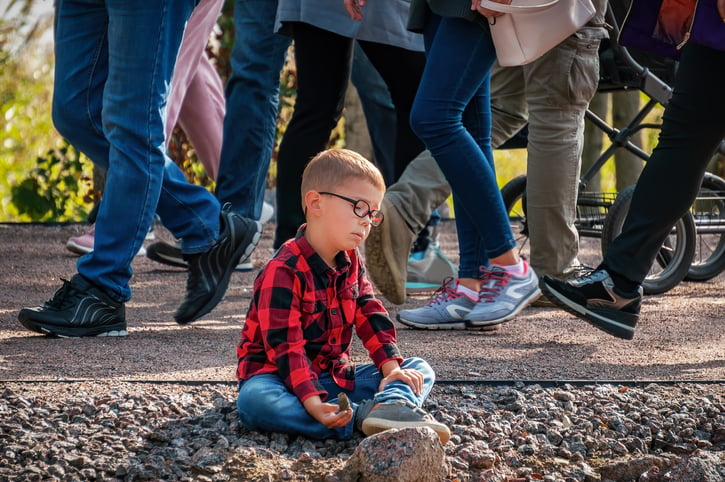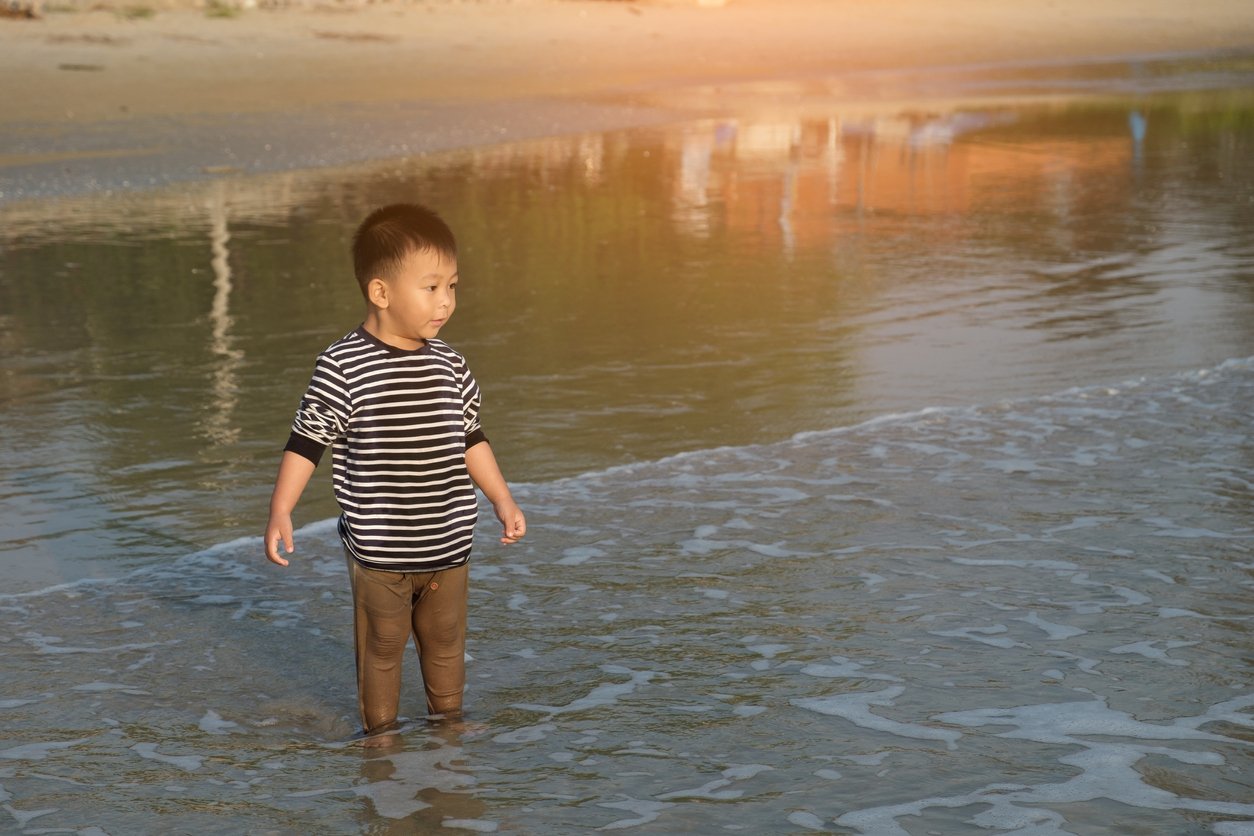Safety First! 8 Ways to Keep Autistic Children Safe
Autism can impact the safety of both autistic children and the adults caring for them. Learning to be proactive in keeping autistic children safe is no small feat. Here’s how I know…
What I Learned About Safety While Raising My Autistic Grandson
My grandson was a runner—and a fast one at that! When younger, he would impulsively take off, and because he lacked a sense of danger, he often darted toward the street or some other place where it was not safe to run. He not only ran, but he ran with a mission! There was always something he was drawn to and he was going to get there no matter what!
In one such incident, he ran out of the front yard directly toward the street and in front of an oncoming car. The driver was shaken up and mad, and I was stunned. I just hadn’t seen that one coming. One moment we were sitting together on the front porch, and the next he was gone.
Another incident happened a while later. We used to get our haircuts at the same hairdresser, who was always very accommodating of my grandson’s sensory and safety needs. She would lock her shop door that led to the busy parking area out front and would ask one of her employees to make sure he was playing or watching TV while it was my turn in the chair.
One day, however, she forgot to lock the door after a customer, and he made a run for it. Before we knew it, he was out the door and running into the grocery store next door. Thankfully, we were able to catch up with him before anything untoward happened.
Besides bolting, as is the case with many autistic children, my grandson was also drawn to water. The sparkling of water in the sunlight, and getting in the water, which can feel like a big comforting hug, was too much for him to resist. So whenever we passed or were close to any body of water, he’d try to make a run for it. He didn’t know how to swim yet, so I had to be hyper-vigilant when we were out and in the vicinity of ponds, pools, or lakes.
At one point, the running instances were so frequent that I researched safety leashes, and I bought one that looked like a good temporary solution. One end was attached with Velcro around my wrist, and the other end was clipped to one of his belt loops. My grandson loved it, as it was long enough for him to walk independently while we were out for errands or taking walks without him having to hold my hand.
Did I get some stares? Sure! But keeping my grandson safe was my priority and at that time that leash was needed to keep him safe as he was often too fast for me to catch up with when he pulled from my grip and got away from me.
According to the American Academy of Pediatrics, 49% of autistic children engage in elopement behavior, with a substantial number at risk for bodily harm. With summer vacation at our doorstep, warmer weather, and more hours at home and outside, here are some things you can do to help keep your children safe:

1. Safety Rules.
One of the most effective ways to keep our children safe is to teach safety rules from a very young age. Autistic children often lack fear and a sense of danger, so presenting visual safety rules is a must! After the close-call running incidents, I wrote the Danger Is…? story for my grandson which covers 10 basic safety rules showing both the right and the wrong way to act. I reviewed and practiced these rules daily for many months until he had them memorized and started following the rules spontaneously without having to be reminded and prompted.
2. Personal Information Record.
In case of emergency, it is important to have pertinent information about your child ready and available. While living in North Carolina, the Autism Society of North Caroline (ASNC) provided me with a Personal Information Record form to fill out for my grandson, including his ways of communicating, triggers for meltdown behavior, favorite toys, calming techniques, medication, medical details, and emergency contacts. Since he was prone to wandering and running off, they suggested I share this with the first responders in my area, and have him included in their database just in case, God forbid, I would ever need their help in locating him. I also kept a copy of this information at home and in my car in case of emergency.
You can download and use this Personal Information Record from Stages.
3. Identification Cards.
Children prone to wandering should always have some form of ID on them. I tried using an ID bracelet, but because of sensory issues, my grandson did not tolerate it well and constantly tried to take it off. I replaced it with an ID card that I sewed into his jacket, but as it got warmer he’d take his jacket off too. I finally settled on a shoe ID tag that was attached to one of his shoelaces with his name and contact number. I taught him to point to it in case he was ever lost and asked for his name.
You can download and use this Identification Card from Stages.
4. Plan.
When planning out of routine events such as birthday parties and outings, it’s important to prepare ahead of time. Scout out the venue for any safety issues, decide If it is safe for you and your child to attend, and determine if you need to communicate any special accommodations ahead of time. Ensure that someone is scheduled to be with your child at all times during the outing or event. Play “tag, you’re it” if you like, but make sure the next person whose turn it is will be fully aware of the need to stay vigilant and keep your child in sight at all times.
5. Home Safety.
Some autistic children can be virtual Houdinis, so look at your home through their eyes to see ways they may find to escape. Besides teaching safety rules, you can post big red STOP signs on doors, and install window alarms and a hook-and-eye lock high on your front and back doors. If you do secure your home with special locks, be sure to let Emergency Services know. The same measures that prevent your child from getting out could prevent emergency responders from getting into your home quickly. The National Autism Association offers the free Big Red Safety Box for families, teachers, or caregivers of autistic children which has amazing resources and detailed information on how to keep our children safe.

6. Swimming Lessons.
Besides wandering, autistic children are often drawn to water. It is estimated that 90% of all autistic children who elope and are reported missing result in drowning deaths! With my grandson’s fascination for water, I attempted to teach him to swim from a very young age, and when the opportunity presented itself, he was enrolled in free swimming lessons for children with disabilities offered by a local organization. It was such a relief to know my grandson could keep himself afloat once he learned how to swim. Your YMCA or other organizations in your area may also offer free or low-cost swimming lessons for children with disabilities, so check yours today!
7. Fire Safety.
Autistic children may not be aware that playing with fire is dangerous and that a small fire can lead to a bigger fire. They need to be taught fire safety. Autistic children can also be very sensitive to sirens and may be scared when firemen show up in full gear. Preparing them for what can happen and what they may hear and see, and teaching them what to do in case of a fire, is very important. The National Fire Prevention Association (NFPA) has excellent visual resources available to teach kids about fire safety and will guide you through the process of developing a Fire Safety Plan.
8. Poison Control.
Some autistic children may be prone to eat things that are not made for human consumption (pica), and others may put things in their mouths to meet a sensory need. Move detergents and cleaning agents out of reach and mark them clearly with a visual that shows your child that these items are not to be ingested. I had my grandson help me label these items before putting them out of reach. The Pittsburgh Poison Center created the iconic Mr. Yuk™ to promote poison prevention. You can learn more and order free Mr. Yuk stickers here!

Keeping our autistic children safe from danger takes a lot of work and constant vigilance. Being prepared and preparing for any eventuality may save lives and is worth any effort it takes.
What measures have you taken to keep your autistic child or student safe? We’d love to hear about it in the comments section.

Ymkje Wideman-van der Laan
Ymkje Wideman-van der Laan is an author, public speaker, and Certified Autism Resource Specialist from the Netherlands. After working abroad as a teacher and humanitarian for 25 years, she moved to the US in 2006 and assumed the care of her then 6-month-old grandson, Logan. There were signs of autism at an early age, and the diagnosis became official in 2009. She has been his advocate and passionate about promoting autism awareness and acceptance ever since. Logan is the inspiration behind the Autism Is...? (tinyurl.com/5aj73ydd) series of children’s books she initially wrote for him and later published. Ymkje currently lives in California with her now 15-year-old grandson, and besides writing, presents autism training workshops for early childhood educators, parents, and caregivers. You can read more about her story in her newly released book, Autism on a Shoestring Budget, [Early] Intervention Made Easier (https://tinyurl.com/ysxhxbmf). For more information, you can visit www.autism-is.com, www.facebook.com/AutismIs, and/or contact her at autismisbooks@gmail.com.




